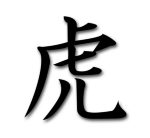The current Shugyo-Budo for Life header is courtesy of Sheila Haddad.
Here is another great shot taken by Sheila of Nagato Shihan at the Daikomyosai last year.
Great shots Sheila. Thank you !
For more photos, please see Sheila’s website.
The current Shugyo-Budo for Life header is courtesy of Sheila Haddad.
Here is another great shot taken by Sheila of Nagato Shihan at the Daikomyosai last year.
Great shots Sheila. Thank you !
For more photos, please see Sheila’s website.
Soke entered the dojo with a unqiue type of training sword last night. I believe Iv’e found the same type of design. Soke often used a Mugi to ( alloy replica with scabbard ) during class. However, for maintaining safety during our own practise, it may be a good type of training sword for those following the theme of Tachi this year.
http://www.sakuramartialarts.com/ProductDetails.asp?ProductCode=WEA%2D9418%2DA1

In Japan the “Tiger” is an awesome animal and preciously revered not just in Japan but the entire Asian adjoining societies.
Specifically in Japan the tiger is the emblem of the great aristocratic warriors famously known as the samurai. The tiger represents the virtue of courage. It also means revision, improvement, change, and the zen good.

The animal has a context of “the poweful one” in the Asian culture. Respected leaders in the Sengoku Samurai era such as Shingen Takeda and Kenshin Uesugi were called “the Tiger” for their strength.

China’s legend has 4 guardian god creatures protecting the Emperor’s palace at the four corners. The exact same guardians have been incorporated by the Japanese culture as well. They are mentioned with the Japanese emperors’ affiliated properties as well as very famous Edo castle in Japan. The guardian god that protects the West corner is a “white tiger”. The very popular tourist spot called “tora no mon” or Tiger’s gate in Tokyo is called that because it is on the west side of where the Edo castle is.
Duncan
Tasmania no Tora
Tonight was the first class with Soke at the Bujinden. Soke arrived with a tachi and a new kakejiku to be displayed next to the kamidana. Prior to the commencement of class, Soke stood and watched as buyu assisted Yabunaka san erect the hanging scroll depicting the philosophical concept / theme of the year.
ROKKON SHOUJOU

The New Kakejiku in the Bujinkan Hombu has a few extra elements to it. My explanation will be definately incomplete. I hope to gain more information to clarify some points very soon.
The main large kanji states the theme Rokkon Shoujou
The kanji used by Soke for Roku 六 is 禄.
When it is combined with Kan such as Kanroku 貫禄, it can mean ” Regal Dignity”, or a person of high status,and influence.
Kon 根 is written as Tamashii, or the ” Soul “.
The kanji used by Soke for Shou 清 is written as Warau, or “ Laugh”.
The kanji used for Jou 浄 is written as 淨. This permeates the meaning of “ Pure, Clear,Cleansing or Purity “.
The kanji on the top left reads Seigi Dai Bujin. This was briefly mentioned by Soke in regards to the establishment of the Dai Bujingu ( shrine ) that will be apparently constructed at an undisclosed time or place in the future.
The five square red stamps ( hanko ) on the left side were explained to Craig Olson by Soke as to represent the godai or five elements. Again, this needs clarification as we were unable to get close enough to see the kanji in the hanko’s before the kakejiku was raised.
The bottom left kanji is Sokes main signature.
The kanji in the top right hand corner is the date.
The kanji in the bottom right hand corner is Toradoshi ( year of the tiger ).
The large red hanko in the bottom left hand corner and the small red hanko in the middle at the top is, Soke’s main Hanko ( in two sizes ).